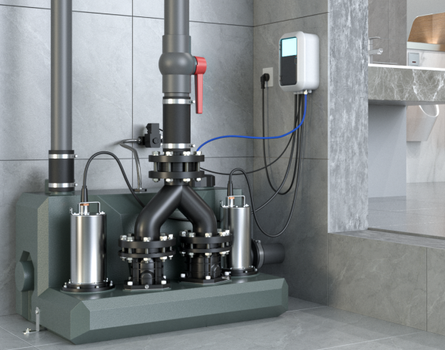Precautions for using sewage lift
The precautions for using the sewage lift mainly include the following aspects:
1. Safe operation
Power management: Be sure to plug in the power supply before use and ensure that the power connection is stable. In the case of power failure, the sewage lift should be stopped to prevent sewage from flowing back into the room. At the same time, when checking and maintaining the equipment, it should also be ensured that the equipment is in a power-off state.
Anti-electric shock measures: The sewage lift may be equipped with high-hardness alloy cutting knives and other components. Do not put your hands into these potentially dangerous areas without cutting off the power.
2. Avoid blockage
Foreign objects are prohibited: Although the sewage lift in the bathroom can cut toilet paper and feces, hard objects, hair, sanitary napkins and other items that are easy to block the pipes should not be placed in the toilet. These items may affect the normal use of the machine and even cause blockage.
Prevent large pieces of solid matter from entering: During use, ensure the sealing of the equipment to prevent large pieces of solid impurities from falling into the equipment. These solid substances may block the pipes and cause damage to the water pump.
3. Regular maintenance and care
Turn off the water source and power supply: If the equipment is not used for a long time, it is recommended to turn off the water source of the toilet and unplug the power plug of the equipment to reduce unnecessary energy consumption and safety hazards.
Inspection and cleaning: Regularly check whether the pump, fan and other components of the sewage lift are in normal condition. If there is any abnormality, it should be handled in time. At the same time, clean the equipment regularly to keep it in good working condition.
Regular maintenance: In order to ensure the normal operation and extend the service life of the sewage lift, it is recommended to carry out professional maintenance and care regularly. This includes replacing worn parts, checking circuit connections, etc.
4. Correct installation and use
Reasonable selection: When selecting a sewage lift, the appropriate model and specification should be selected according to the actual drainage volume and lift requirements.
Correct installation: During installation, the operation should be carried out in accordance with the instructions and installation specifications to ensure that the equipment is placed horizontally and fixed firmly. At the same time, pay attention to reserving inspection ports for later maintenance.
Use specifications: During use, the operating specifications and instructions of the equipment should be followed to avoid damage or failure of the equipment due to misoperation.
5. Other precautions
Waterproof and moisture-proof: The sewage lift should be installed in a dry and ventilated place to avoid moisture and water ingress. If the equipment needs to be installed in a humid environment, appropriate waterproofing measures should be taken.

Ventilation pipe installation: For sewage lifts that require ventilation, ensure that the vent pipe is installed separately outdoors and cannot be connected to other pipes in the building (such as smoke exhaust pipes, exhaust systems, and toilet mechanical exhaust pipes, etc.) to ensure the normal drainage function of the sewage lift.




